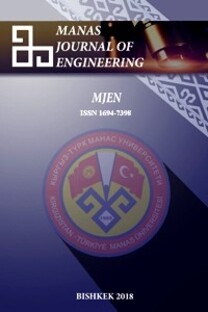Performance analysis of static var compensators for distance protection of Nigerian 132-kV sub-transmission network using Matlab/ Simulink model
In this paper, the influence of the Static Var Compensators (SVC) on distance relay protection when connected to the sub-transmission network of the Nigerian 132-kV grid system is investigated. This is carried out by monitoring the error margin of the fault locator associated with the distance protective relays when SVC is connected to the transmission line. The location of the SVC is selected such that there is a common primary source of power to the sub-transmission network (Ikorodu-Sagamu 132-kV transmission line) and the SVC, which is a shunt-connected device located on Ikorodu 132-kV bus. The fault is simulated at 33.6 km and 60.4 km respectively from the Ikorodu 132-kV sub-station in Matlab/ Simulink model and the simulation results obtained are used to investigate the influence of SVC on distance protective relay when connected to the 132-kV power transmission line. The results of the line faults are obtained with respect to earth for both zones one (1) and two (2) when SVC is connected and disconnected for all shunt type of faults. Thus, indicating under-reach and over-reach characteristics of the distance relay, when the SVC is connected and disconnected, while the transmission line protection showed no under-reach or over-reach characteristics for line-to-line fault for both zones with the SVC connected or disconnected. The results of this study show that though SVCs improve the quality of power to consumers, there is a tendency for under-reach and over-reach characteristics of the protective relay to be displayed when the relays are disconnected and connected, which introduces error margins to the fault locator in distance protective relays. Therefore, more detailed dynamic simulations are recommended for reducing the error margin.
Keywords:
Static Var Compensators Distance relay protection, Error margins, Flexible Alternating Current Transmission Systems, Voltage profile,
___
- IndustryArc, “Static VAR Compensator Market: By Type (Thyristor-Based SVC, & Magnetically Controlled Reactor-Based SVC) By End-Use Industry (Electric Utility, Renewable, Railway, Industrial, Oil & Gas, & Others), By Component & Geography - Forecast (2018 - 2023),” 2018. [Online]. Available: https://industryarc.com/Report/15449/static-var-compensator-market.html.
- P.S. (AEG G. H. Pesch, S. Ranade, M. Schubert, “Static VAR-Compensators for stabilizing traction and transmission systems in South Africa,” Berlin, 2007.
- Anumihe, “FG obtains $13m JICA grant to fix power supply in Nasarawa State,” Sun News Online, 2019. [Online]. Available: https://www.sunnewsonline.com/fg-obtains-13m-jica-grant-to-fix-power-supply-in-nasarawa-state/. [Accessed: 19-Nov-2020].
- Aptransco, Technical Reference Book. HYDERABAD: TRANSMISSION CORPORATION OFANDHRA PRADESH LIMITED, 2004.
- Mohamed Zellagui A.C., “Impact of svc devices on distance protection setting zones in 400 kv transmission line,” U.P.B. Sci. Bull., Ser. C, (2013), 75, 2, 249–262.
- Lamture J., “DEVELOPMENT OF DISTANCE RELAY IN MATLAB,” Int. J. Adv. Comput. Eng. Netw., (2015), 3, 9, 77–80.
- Xiaoyao Zhou H.W Aggarwall R.K., Phil Beaumont, “The Impact of STATCOM on Distance Relay,” in 15th Power Systems Computation Conference (PSCC’05), (2005), 1–7.
- Altaie A.S., “Design of a New Digital Relay for Transmission Line Fault Detection, Classification and Localization Based on a New Composite Relay and Artificial Neural Network Approach,” Western Michigan University, (2015).
- Ngo Minh Khoa D.T.V., Nguyen Huu Hieu2, “A Study of SVC’s Impact Simulation and Analysis for Distance Protection Relay on Transmission Lines,” Int. J. Electr. Comput. Eng., (2017), 7, 4, 1686–1695.
- Sybille P.G., “SVC (Detailed Model).” [Online]. Available: https://www.mathworks.com/help/physmod/sps/examples/svc-detailed-model.html. [Accessed: 08-Jul-2019].
- Al-Husban A.N., “An Eigenstructure Assignment for a Static Synchronous Compensator,” Am. J. Eng. Appl. Sci., (2009), 2, 4, 812–816.
- Le Ngoc Giang T.T.N., Nguyen Thi Dieu Thuy, “Assessment study of STATCOM’s effectiveness in improving transient stability for power system,” TELKOMNIKA, (2013), 11, 10, 6095–6104.
- ISSN: 1694-7398
- Yayın Aralığı: Yılda 2 Sayı
- Başlangıç: 2001
- Yayıncı: KIRGIZİSTAN-TÜRKİYE MANAS ÜNİVERSİTESİ
